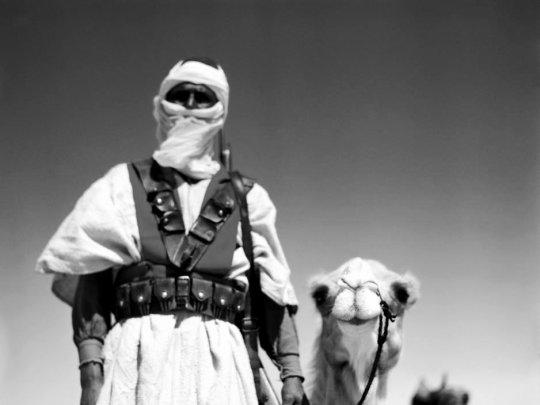#Tuareg
Text

Tuareg woman, Niger, by Africa Online Museum
#tuareg#niger#africa#folk clothing#traditional clothing#traditional fashion#cultural clothing#western africa
646 notes
·
View notes
Text
Characters reconnecting with their ancestral cultures in an interplanetary setting
@pixiedustandpetrichor asked:
Hi! I am writing a novel with three main female characters in an interplanetary setting. They grow up as orphans in an Irish-coded country and as children are mostly exposed to solely that culture, but they leave after becoming adults.
Character A is Tuareg-coded, B Mongolian-coded, and C is Germanic-coded. It isn’t central to the story, but I would like them to get in touch with/learn more about their ancestral cultures, especially in terms of religion. A does this by actually visiting the planet her parents came from, but B and C do not.
What can I do to depict their relationships with said cultures and their journey to reconnect with them? Would it be realistic for each of them to have different mixed feelings about participating in these cultures and for them to retain some sense of belonging to the culture they grew up in as well? Thank you for your time.
Hello, asker! WWC doesn’t have Tuareg or Mongol mods at the moment, so we're not able to speak to the specifics of cultural and religious reconnection for these particular groups. Still, I want to take this opportunity to provide some general context and elements to consider when writing Tuareg-coded characters, or other characters from groups that have experienced colonization in the real world. My fellow mods will then share thoughts about cultural reconnection in general and with respect to Germanic heritage in particular.
Drawing inspiration from groups that have experienced colonization
As you’re probably aware, the Tuareg are an ethnic group indigenous to North Africa. As with many indigenous groups, they have experienced colonization multiple times over the course of their history. Colonization often leads to the loss or erasure of certain aspects of culture as the colonized people are pressured to conform to the culture of the dominant group. In many cases, it’s near impossible to say what the ancestral culture of a colonized group was prior to colonization.
When coding a fictional culture based on a group that was colonized in the real world, it's important to ask questions about:
Which aspects of culture you're portraying
Where these aspects come from
Whether you're ready to tackle their implications for the world you're building
It’s not necessarily wrong to use elements of coding that draw from cultural aspects influenced by colonization. As I said, it can be very difficult, even impossible, to portray a “pure” culture as it would have been had colonization not occurred–because we simply can’t know what that alternate history would look like, and because so much has been lost or intentionally suppressed that the gaps in our knowledge are too wide to breach. But it’s important to be aware of where these cultural elements are coming from.
Where is your coding coming from and what are the implications?
For example, while the Tuareg today are majoritarily Muslim, this was not the case prior to the Arab conquest of North Africa. Some elements of Tuareg culture today, such as tea ceremonies, are derived from the influence of Arab and Muslim culture and likely did not exist prior to the 20th century. As you’re developing the culture of the Tuareg-coded group in your fictional setting, you have to decide whether to include these elements. There is no right answer–it will depend on what you’re trying to do and why.
Is your setting in our far future, in which case we can assume your Tuareg-coded group is distantly related to today’s Tuareg?
In that case, they will probably have kept many cultural aspects their ancestors acquired through their interactions with other cultures around them–including cultural groups that colonized them. They may–let’s build hopeful worlds!–have reclaimed aspects of their ancestral culture they’d been forced to abandon due to colonization. They may also have acquired new aspects of culture over time. This can be very fun to explore if you have the time and space to do so.
I would recommend speaking with Tuareg people to get a better grasp of how they see their culture evolving over the next however many centuries or millennia, what they wish to see and what seems realistic to them.
Alternatively, maybe your setting is a secondary world unrelated to ours and you only want to draw inspiration from the real-world Tuareg, not represent them exactly. In that case, you need to decide which period of history you’re drawing from, as Tuareg culture is different today from what it was 50 years ago, and different still from 200 years ago or 1000 years ago. You’ll need to research the historical period you’re choosing in order to figure out what was happening at that time and what the cultural influences were. If it’s pre-colonial, you’ll probably want to avoid including cultural elements influenced by colonization from groups that arrived later on.
Finally, if the time period you’re drawing from is post-colonial:
Are you planning to account for the effects of colonization on Tuareg culture?
Will you have an in-world equivalent for the colonization that occurred in real life?
For example, will the Tuareg-coded characters in your world be from a nomadic culture that was forced to become sedentary over the years and lost much of their traditions due to colonial pressure to conform?
Where did this pressure come from in your world–is it different from what happened in ours? If so, how different? And what are the consequences?
Writing about colonization can be quite the baggage to bring into a fictional setting. I’m not saying it can’t be done, but it will certainly require sensitivity and care in portraying it.
In summary: think it through
I’m not saying all this to discourage you, but to point out some of the considerations at play when drawing inspiration from a real-life culture that has experienced colonization. Similar challenges arise for coding based on any other indigenous group in the world.
My advice to you, then, is to first sit down and decide where and when in history your coding is coming from, and what you’re trying to achieve with it. This will help you figure out:
which elements of contemporary Tuareg culture are pertinent to include
How much your coding will be influenced by the Tuareg’s real-life history
To what extent that will inform the rest of the world you’re creating
This, in turn, may help in deciding how to portray your character’s reconnection journey.
Again, I am not Tuareg and this is by no means meant to be an exhaustive list of considerations for writing Tuareg-coded characters, only a few places to start.
If any Tuareg or Amazigh readers would like to chime in with suggestions of their own, please do. As always, please make sure your comments adhere to the WWC code of conduct.
- Niki
Pulling from diaspora and TRA narratives of cultural reconnection
Marika here: This ask plotline could also pull directly from diaspora and TRA narratives of cultural reconnection. Many diaspora and TRA cultural reconnection stories are, in effect, about navigating the difficult process of resuscitating, or renewing ties to culture using limited resources in environments that often lack necessary cultural infrastructure or scaffolding.
See this question here to the Japanese team for suggestions of how to handle such a storyline in a similar sci-fi setting.
More reading: Japanese-coded girl from future
-Marika
Reconnecting with German heritage
Hi, it’s Shira. I’m not sure whether German-Jewish counts as Germanic for the purposes of your post but since German Jews were more assimilated than other Ashkies, Germanness does feel real and relevant to my life (especially because my father worked there for approximately the last decade of his life.) NOTE: when I see “Germanic” vs German I think of cultures from 1500 years ago, not 100-200 years ago, so I can’t help you there, but I’d be surprised as a reader if a character focused on that for reconnection to the exclusion of the 19th century etc.
People in the United States specifically, reconnecting with German heritage, often lean into Bayerischer/Bavarian kitsch, I’ve noticed. Personally, though, what I find most relevant is:
1. The food (although I’ve come to learn that what I grew up eating was closer to veal/chicken scallopini than actual schnitzel because it was drenched in lemon, but I do like the other foods like the potato salad and sweet and sour red cabbage etc.) Your character could try making one of these “ancestral” foods as a way to reconnect?
2. The classical music, because I’m a second generation professional musician – if character C plays an instrument, leaning into that might be meaningful (Beethoven, Bach, Brahms, Mendelssohn, Clara Schumann and her husband Robert, etc.)
3. The nature, especially specifics that I enjoyed during my time there – personally, I loved the bright pink flowers all over the chestnut trees, but there are a lot of choices especially because of the Alps. If C is an artist maybe they can sketch something Germany-related from old photographs they found on the Space Internet?
I think it is VERY realistic for the characters to remain connected to the culture in which they were raised, by the way, whether or not they have positive feelings about it. Culture isn’t an inherited trait. Sure, if they want to completely walk away, they can, but I bet there are still ways it will creep back in without them realizing it simply because it’s really hard to have universal knowledge of the origins of all our quirks. Plus, not everyone feels alienated from their raised-culture just because they’re genetically something else.
P.S. There is also Oktoberfest, which I don’t really get into but is a thing, and beer, which is another point of German cultural pride.
German gentiles, weigh in – y’all have your own stuff, I know! OH YEAH so for German Christians, Christmas “markets” are a whole thing. That’s worth looking up.
–S
What do you mean by Germanic?
Hello it’s Sci! I had to study German history for my historical fantasy novel set in the late 18th century Holy Roman Empire. I am not sure what is meant by Germanic as that can encompass a variety of things.
Germanic people: from the Classical Period of Roman Empire and early Middle Ages. Similar to Mod Shira, I unfortunately can’t help very much here.
The Germanosphere: regions that spoke German, which includes modern day Germany, Austria/Hungary, Switzerland, Lichtenstein, Belgium, and Luxembourg. I generally define this as the regions captured in the Hapsburg Empire along with Switzerland usually encompassing “Central Europe.”
Modern German national identity (i.e. German): post Napoleon and the Congress of Vienna (> 1815) only including the territory of modern day Germany.*
I ask this because modern German national identity is surprisingly recent since Germany only popped up in 1871 under Otto von Bismarck. Previously, Germany was divided into smaller states and city states as a very decentralized region under the German Confederation and before that, the Holy Roman Empire. Depending on the era, you can see different conflicts and divides. During the early days of the Protestant Reformation started by Martin Luther, the northern and southern German territories generally split along Protestant-Catholic lines. The 18th century saw Austria and Prussia as the foci of global power who warred against each other even though both were part of the Holy Roman Empire.
Other states and city-states like Baden-Wurttemberg or Saxony sometimes had power but it was typically more localized compared to Austria. Post-WW2, you saw the split of Germany into West Germany run under capitalism and East Germany run under communism as a satellite Soviet state leading to more modern cultural divides. Due to heavy decentralization historically, each region had its own character with religious and cultural divides.
Assuming that the Germanic character is not from the classical period or early Middle Ages but not from the 19th century either, you can include your character reconnecting to classical folklore like that of Krampus (if they’re Christian), German literature and music like the works of Johann Wolfgang von Goethe or Mozart, or German philosophy like Immanuel Kant.
*A major wrinkle: German royals and nobility married into other states and nations frequently with Britain and Russia being notable examples. In Britain, the House of Hanover took over after the Stuart House died without clear direct heirs. When Queen Victoria married the German prince Albert, they celebrated Christmas with a tree and brought the German tradition of a Christmas tree to Britain and the British Empire. Only during World War I did the royal family’s house of Hanover name change from House of Saxe-Coburg and Gotha to the more “English-sounding” Windsor. As a result, the German cultural influence may be even more widespread than we think.
However, without more specific descriptors of what Germanic means in the context of your story, it can be difficult to determine which aspects of German culture your character could reconnect to.
-Mod Sci
#culture#cultural disconnect#cultural reconnect#race coding#ethnic coding#German#Mongol#Tuareg#setting#science fiction#Jewish#Colonialism#History#North Africa#Arab#Muslim#history
337 notes
·
View notes
Text


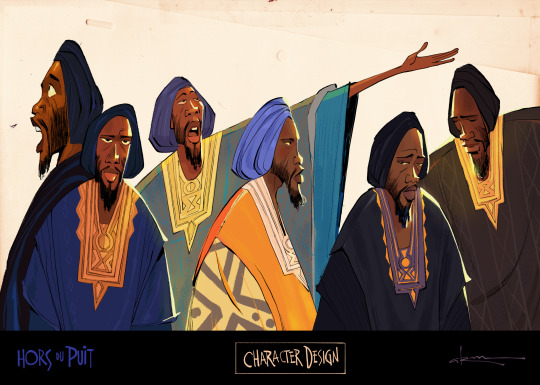
TALES FROM SUDAAN
Character from a short story I've been working on.
His name is Diallo, gardian of the sacred well.
Hope to show more on this soon.
469 notes
·
View notes
Photo


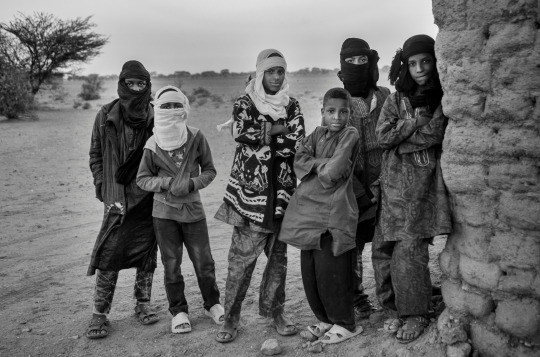

In the Privacy of the Tuaregs
Photos by Ferhat Bouda, 2016.
Between the Sahara and the Sahel, around the cities of Agadez and Abalak, in central Niger, live Tuareg tribes who have chosen to move away from cities, new technologies and assimilation. They are still semi-nomadic, but only move their camps twice a year and only a few kilometers depending on the rising waters in winter.
Livestock raising is their main source of income. Since the 1960s, however, many men forced to leave the villages to go to work in the city and thus be able to support their families
Women, very proud, are the pillars of the tribes. Refusing polygamy, which is very widespread in the region, they are the ones who choose their husband and, at the slightest dispute, it is the man who must leave the house and leave the children and cattle to the woman. In many ways, it appears to be a matriarchal society, but decision-making remains in the hands of men.
Several distinctive signs give Tuareg society its authenticity, such as its habits and customs, its arts, its fashions and other traditional weapons.
Remaining nevertheless the linguistic organ which structures the culture of the Tuareg population. This organ is Berber and makes it an Amazigh entity in its own right.
267 notes
·
View notes
Text

Eyadou Ag Leche of Tinariwen, Coachella Music Festival, 2009.
325 notes
·
View notes
Text
The resilient culture of the Tuareg of the Sahara Desert is a sight to behold, marked by distinctive tagelmust veils, camel caravans and the enduring matriarchal legacy of Queen Tin Hinan.
42 notes
·
View notes
Text
Jeff's Tuareg Cross


For sale on Etsy
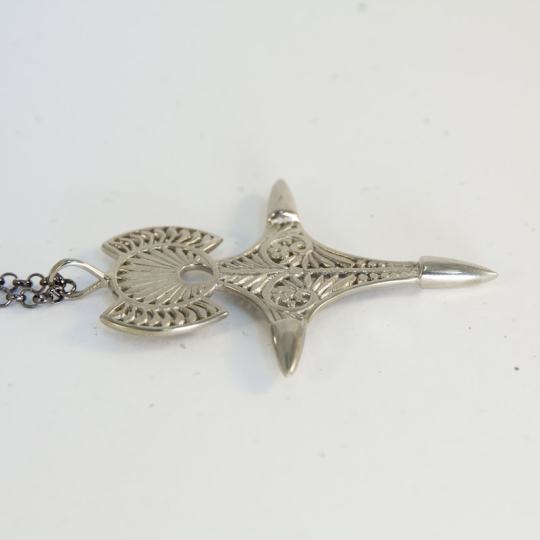
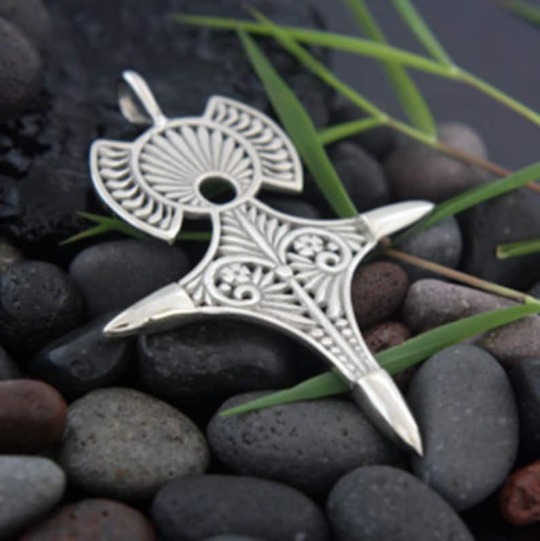
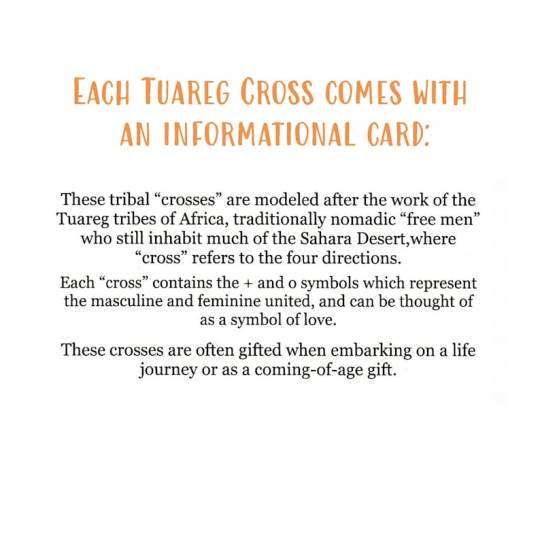
The Meaning
Any question about their symbolism put to the users generally elicits only vague answers. Some attribute to it a function of "grigri" or “reserve of wealth". The ethnologists Germaine Dieterlen and Ziedonis Ligers spotted a situation where the father gave the jewel to his son in age of virility, marriage and nomadism, saying to him: "My son, I give you the four directions of the world, because we do not know where you will go to die".[6]
According to one Tuareg elder narration, a young nomadic warrior wanted to declare his love to the young girl of his heart, the latter being locked up at home and therefore inaccessible to his messages. The village blacksmith then had a very important place in Tuareg society. As such, the blacksmith had the right to enter the houses of all the families with whom he traded with. The young man then had a jewel forged which combines the two syllables of the Tamashek word " T (a) R (a)" ("tara" meaning " love" and spelled "ⵜⵔ" in the Tifinagh alphabet.) and entrusted the blacksmith with the mission of transmitting the message of love to his beloved in the greatest discretion.[7]
#jeff buckley#jeffbuckley#Tuareg#Tuareg cross#agadez cross#love cross#four directions of the world#nomad#nomadic
21 notes
·
View notes
Text

The Haratin , also spelled Haratine or Harratin, are an ethnic group found in western Sahel and southwestern Maghreb. The Haratin are mostly found in modern Mauritania (where they form a plurality), Morocco, Western Sahara, and Algeria. In Tunisia and Libya, they are referred to as Shwashin.
The Haratin speak Maghrebi Arabic dialects as well as various Berber languages. They have traditionally been characterised as the descendants of former Sub-Saharan slaves
The Haratin form an ethnic group distinct from Arab and Tuareg populations, as well as from the contemporary ethnic groups of sub-Saharan Africa. In Mauritania, however, where there are nearly 1.5 million Haratin, they have developed a separate sense of ethnic identity.
During the Roman occupation of Mauretania, the Godala Berber tribe fled to the south towards the Draa oasis and enslaved the local Haratin population. They have historically inherited their slave status and family occupation, have been endogamous, and socially segregated. Some communities differentiated two types of slaves, one called 'Abid or "slave" and Haratin or "freed slave". However, per anthropologist John Shoup, both 'Abid and Haratin were not free to own land or had equivalent property rights. Regardless of whether they were technically free or not, they were treated as socially inferior in the communities they lived in. Being denied the right and the ability to own any land, they historically survived by accepting a patron-client serf relationship either as domestic servant or as share-cropping labor (khammasin).
They became a common target of mandatory conscription by the Moroccan ruler Ismail Ibn Sharif as he sought to build a military that had no social or cultural attachment to any other Arab or Berber group in Maghreb. He conscripted the majority of able-bodied male Haratin and 'Abid that were present in Morocco at the time. This army was then commonly coerced into a series of wars in order to consolidate Ibn Sharif's power

#african#afrakan#kemetic dreams#brownskin#africans#afrakans#brown skin#african culture#moroccan#ismail ibn sharif#haratin#abid#khammasin#north africa#north african#alegria#sahel#sahara#tuareg#arab#tunisa#libya#shwashin#mauritania
33 notes
·
View notes
Text
This photo was originally taken in 1977, and then digitized in 2021
📍Tuaregs, Tamanrasset 🇩🇿
K: Erwin Ebermann | Flickr
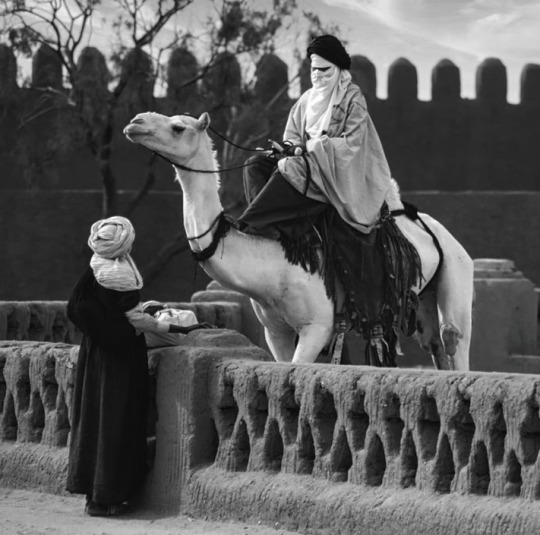
13 notes
·
View notes
Text
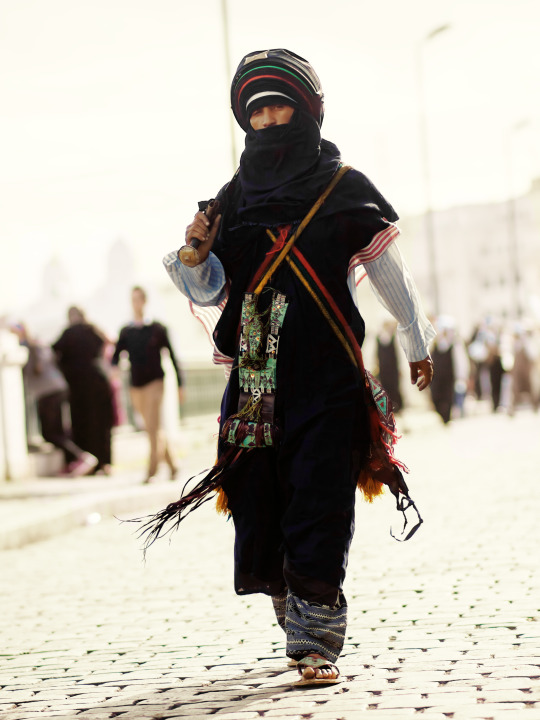
Tuareg man, Algeria, by Amine Ioua
#tuareg#algeria#africa#north africa#traditional clothing#traditional fashion#cultural clothing#folk clothing
338 notes
·
View notes
Text
List of headcanons (Aladdin fandom)

I want to make it clear right away that these headcanons should not be considered all together, they are not small parts of the big picture. Yes, some of them are related or derive from each other, but some contradict the rest, so it is better to consider each one separately.
Clarification: the list is not final, it will be constantly supplemented and expanded.
An important note: headcanons will be understandable to those who watched all three parts of the cartoon Aladdin, as well as the series, and also read articles in fandom wiki.
___________
1. The favorite headcanon - is Aladdin, Mozenrath, Cassim - members of the same family. Mosenrath and Aladdin are brothers (completely or only on the line of one parent - no matter, I allow almost any variation).
2. Mozenrath has Asian roots.
3. Aladdin has whip scars on his arms and back from his time as a street thief.
4. In Agrabah about 20 years ago, there was an epidemic or post-war famine or economic decline and currency collapse. During that time period, many people lost relatives, including Aladdin lost his mother and Cassim was forced to leave Agrabah to earn some money.
5. Aladdin cannot write or read, and now he is learning how to do so. Until Aladdin is literate enough, he will not be allowed to be sultan.
6. Both Mozenrath and Cassim have mental trauma. Mozenrath from his childhood and adolescence, Cassim from the first time he killed a man and from the time he returned to Agrabah to his family but found neither his wife nor his son alive (or rather, he thought that no one had survived).
7. Cassim is a Tuareg (settled in Agrabah), or at least has Tuareg roots. A bunch of others follow from this headcanon, such as:
•Cassim knows the Tuareg language, Arabic is his second language.
•Cassim speaks with an accent, and sometimes mixes Arabic with his native language.
• Cassim’s marriage was not approved by his wife’s relatives.
• Cassim’s favorite color is blue, and he mostly wears blue clothes, he observes some Tuareg traditions, and abandoned some completely or partially to please the circumstances.
That's it, only 7 items so far, I'll be adding to it gradually
8. Mozenrath respects Jasmine deep down for her character and status.
9. Mozenrath has pierced ears and sometimes wears earrings.
10. Mozenrath tried to regain his hand with various spells... His bones were scratched with the texts of spells and conspiracies, which at least somehow slow down the process of further rotting of the remaining flesh.
little update hehe
11. Cassim has dissociative identity disorder. One of his personalities is psychopathic and truly enjoys criminal activities.
Wtf

12. Cassim loves beautiful clothes, jewelry and various trinkets, but wears them extremely rarely in order to avoid laughter and jokes from the other people.
13. Cassim is very fond of horses (you remember he didn't want to fly on the carpet with Aladdin and he was also talked into going to Agrabah on horseback ). He has also participated in horse races several many times and still does. He also likes to do trick ringing.
Just a small update today
14. The oracle was brought to Aladdin's wedding by Mozenrath.
15. Mozenrath's skeletal hand has no feeling, which is why he became left-handed after wearing the glove.
it's time to remember about Iago:
16. Iago and Cassim became not just good adventure companions, but true friends. Iago feels much more comfortable in Cassim's campaign, since now no one shuts him up, condemns him, or turns him into anything, heh.
17. Iago doesn't particularly like to work, but he does a favor for his friend: after Cassim leaves Agrabah, Iago helps him exchange letters with his son.
18. Iago loves casinos and every time he persuades Cassim to go there. Every time they gamble, they cheat according to their usual pattern: Iago pretends that he is an ordinary and stupid parrot that a man brought with him for some reason, and at this time helps Cassim rig the cards or recognize his opponent's cards.
I was sure that this⬇️ was already on my list, but as it turned out, no(
19. Mozenrath has long hair, but he braids it so that the length does not peek out from under his turban.
Something like this:

#aladdin#aladdin the series#mozenrath#аладдин#disney villains#мозенрат#disney characters#disney#aladdin and the king of thieves#хедканон#кассим#headcanon#tuareg#agrabah#aladdin the animated series#iago#au#aladdin 3#aladdin tv series#aladdin 1996#aladdin 1992#aladdin 1#headcanons#my headcanons#aladdín
23 notes
·
View notes
Text

Tuareg woman from North Africa
French vintage postcard
#postkaart#africa#tuareg#carte postale#french#briefkaart#old#sepia#postkarte#vintage#north africa#postal#north#photography#ephemera#postcard#tarjeta#woman#photo#ansichtskarte#historic
18 notes
·
View notes
Photo

Tuareg woman from Niger (2000)
720 notes
·
View notes

